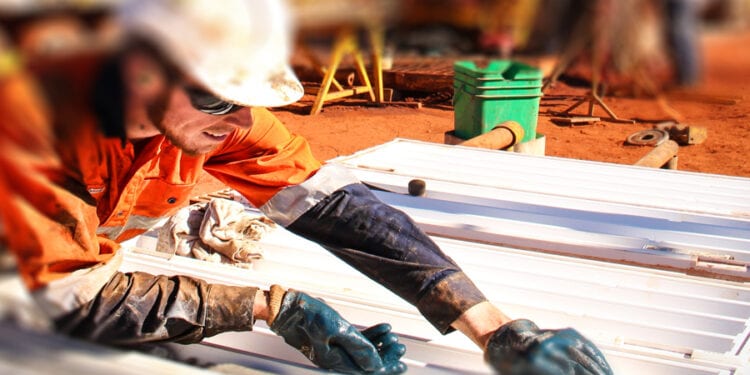Western Australian nickel company St George Mining Limited (ASX: SGQ) has announced it has made a breakthrough in identifying significant new exploration targets at its flagship Mt Alexander nickel-copper sulphide project in the north- eastern Goldfields.
An MT/AMT survey was completed at Mt Alexander earlier this month, designed to map structures and conductive rock types (including mafic/ultramafic intrusives) along two key sections of the Cathedrals Belt that are known to host nickel-copper sulphide mineralisation. The survey was also designed to identify repetitions of similar structures and stratigraphy in the underexplored tenements adjacent to the Cathedrals Belt.
John Prineas, St George Mining’s Executive Chairman, said that interim results from the MT survey have delivered exciting new information on the presence and orientation of the prospective structures and potential mafic/ultramafic stratigraphy, opening up a new range of priority targets for nickel-copper sulphides.
According to Mr Prineas, at the Investigators Prospect, data from the MT survey has clearly shown a conductive response that is coincident with the Investigators ultramafic where extensive high-grade mineralisation has already been discovered from near surface to more than 250m below surface; see Figures 1 and 2.
The coincidence of the known shallow nickel-copper sulphides at Investigators with a strong conductive (yellow) response, supports the potential of other similar responses in the MT survey data to represent mineralised ultramafics.
The MT survey data at Investigators indicates that the Investigators ultramafic has been potentially offset by faulting, but that a repetition of the ultramafic occurs below the offset and to the north. This area has never been drilled and could extend to a depth of more than 1,000m.
The MT survey data also showed that conductive responses are present at depth at the Fairbridge Prospect, the West End Prospect and to the north of Investigators on tenement E39/548 (owned 100% by St George). These areas have also never been drilled.
The modelling of the MT survey data is continuing with further results expected by early next week. Processing of the data will include sophisticated 3D inversion modelling, which will provide further definition and accuracy for mapping the stratigraphy and structures.
The identification of new conductive responses in the MT data provides a strong targeting mechanism to locate additional nickel-copper sulphide deposits. The 2020 drill programme will be deferred until all MT survey data can be considered and revised drill targets can be designed by our technical team.
The deferral of the drill programme will also provide an opportunity to plan a programme that addresses the developing restrictions related to the COVID-19 pandemic.
“The results from the MT survey are a game-changer for exploration at the Mt Alexander Project,”Mr Prineas said.
“We have already discovered high-grade nickel-copper sulphides at shallow depths across more than 5.5km of the Cathedrals Belt.
“However, intrusive mineral systems like we have at the Cathedrals Belt will typically have significant mineralisation at depth.
“These potential larger deposits are likely to be at deeper levels than explored to date at the Cathedrals Belt and our challenge has been how to best target drilling to discover these deeper, undercover deposits.
“The MT survey has gone a long way towards unlocking the geological model at the Cathedrals Belt by providing new and breakthrough insights into the stratigraphy and structural framework at depth.
“We now have a guide to where the granites have disrupted the ultramafics, how the ultramafics have been folded and – most importantly – where the deeper deposits may be located.
“We will revise the drill programme for Mt Alexander in light of this data and are very excited at the opportunity to test drill these new targets.
“The COVID-19 pandemic has created many challenges for our community and for our industry. We will carefully navigate this evolving period of uncertainty to protect the health and safety of our team and service providers, and to keep St George strong.












